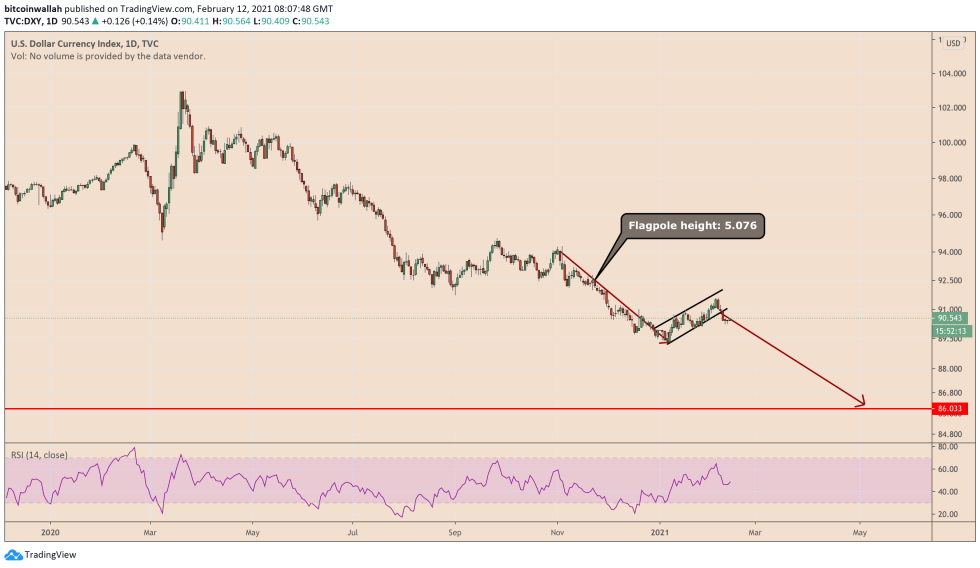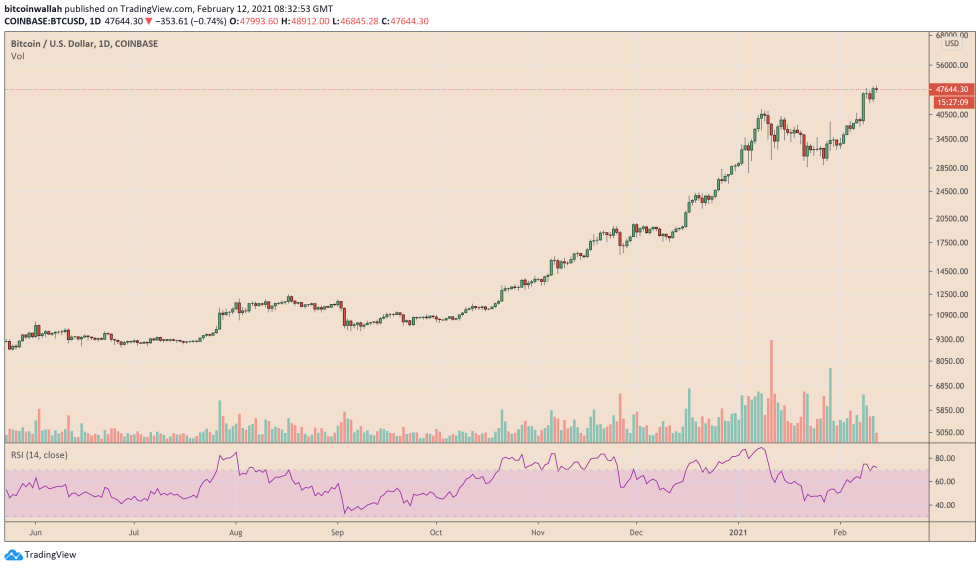
Both the US dollar and Bitcoin enjoyed a period of strength at the beginning of 2021. But while the cryptocurrency continued its uptrend higher, led by a new wave of institutional adoption, the greenback endured a sharp pullback in the wake of unsupportive fundamentals.
The US dollar index, which tracks the greenback’s strength against the strongest global foreign currencies, broke below a crucial upward sloping support that constituted an Ascending Channel on Tuesday. Technically, the move signaled a negative breakout in the direction of the dollar’s previous downward trend. It made it appears like a Bear Flag.
In retrospect, Bear Flags are bearish continuation patterns, confirmed by an initial strong directional move lower, followed by a consolidation channel in an upwards direction. Traders typically look for prices to break more down with a length equal to the previous flagpole’s size.

Per the signal, the index now anticipates a decline of as much as 5.076 points, which shifts its downside target to near 86 points in the coming sessions.
In broader timeframes, the US dollar had crashed by more than 12 percent after logging its three-year high in March, just around when the markets realized the coronavirus pandemic’s severity.
A flurry of dovish measures undertaken by the Federal Reserve, which included a commitment to keep rates near zero while purchasing bonds indefinitely, lowered the greenback’s purchasing power. Meanwhile, the prospects of earning meager returns from the short-term bonds sent investors looking for investment alternatives in risky markets.
That allowed assets like bitcoin and gold to notch record highs.
Poor Economic Data
The bearish continuation signals on the US dollar charts receive further tailwinds from weaker-than-expected economic data.
The Sydney Morning Herald reported that the short positions in the greenback are at their highest levels in a decade. That signals a spike in traders’ bearish outlook on the currency, led by an explosion in US debt in 2020, followed by the prospect of US President Joe Biden’s $1.9 trillion stimulus package.
Overall, the coronavirus pandemic has prompted the US government to inject more than $3 trillion worth of aid into the markets. Now, an additional supply of $1.9 trillion against an underwhelming demand (as investors hunt profits in riskier markets) is pressuring the dollar lower.
“As COVID-19 vaccinations increase and the world starts to contain the pandemic, global markets are shifting towards a “risk-on” environment, which historically has weakened the greenback as capital flows to higher-risk, higher-return environments and into the US sharemarket,” reported SMH.
Bitcoin Boom to Continue?
A depreciating US dollar rate in 2020 prompted many institutional investors and corporates to dump the greenback for Bitcoin. The flagship cryptocurrency’s anti-fiat narrative, which originates from its limited supply cap of 21 million tokens, helped it rise by more than 1,100 percent from its mid-March nadir of $3,858.

Entering 2021, companies like Tesla and MicroStartegy have exchanged an incredible portion of their cash reserves for Bitcoin. Meanwhile, other firms are busy building infrastructures to cater to future crypto demands in the mainstream financial sector.
That includes PayPal, which now offers bitcoin-enabled trading and storage services in the US, and BNY Mellon, which announced its plans to offer custodian services for the cryptocurrency investors.
Bitcoin reached a record high above $49,000 on Friday.


















